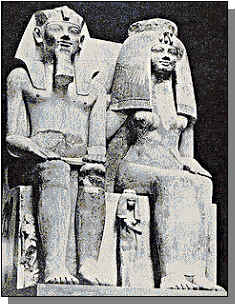Murder & Mayhem in Medieval Abram
|
|
When I asked Adrian Morris to look at the Sites and
Monuments Record for Abram, I knew he was well up on its history, having taught there for
many years, but I don’t think even he realised the extent of its murky past.
Here are some snippets from the 14th century.
Felonious Murder
It was alleged that, on 9th June 1321, "Henry de Abberam (Abram) murdered
Henry atte Gate at Abberham". Two years later in the company of four others he
was said to have "feloniously killed Robert de Derwent". Lesser crimes, of
which he was accused, were taking away "oxen belonging to John del Hill of
Halywell" (1321), stealing "cloth to the value of eight pounds from Henry Russel
of Wigan" (1323) and "goods to the value of 60s at Helegh" (1323).
Rival Factions
This is quite an indictment on the character of the son of an important local
landholder. To understand his actions it is necessary to look at life in Lancashire
at that time. Lawlessness was rife and many of the sheriff’s bailiffs were
corrupt. It was not unusual for local landowners to turn to violence to solve their
disputes. There were two main factions in the region at that time the Hollands led by
Robert de Holland and the Banastres with Adam Banastre at their head. Lesser
landowners chose their favourites: the Abberhams sided with the Hollands.
The Banastre Rebellion
Thomas, Earl of Lancaster's patronage of Robert de Holland, caused disquiet among other
important landholders who were worried about the family's rapid advance. In 1315
Adam Banastre of Shevington, with Henry de Lea and Sir William Bradshaw (of
Mab's cross fame) expressed their disapproval in a violent manner by leading their
followers in a reign of terror throughout southwest Lancashire. This period of
unrest is usually referred to as the "Banastre Revolt". Eventually, in
October of the same year, the two factions met in a fierce battle at Deepdale near
Preston. The Banastres were defeated in less that an hour. Adam Banastre
escaped but was later caught and beheaded.
Bradshaw Escapes 
William Bradshaw managed to evade capture and disappeared. With the defeat and
execution of Thomas of Lancaster by Edward II at the battle of Borough bridge in
1322, William Bradshaw assumed that the political climate had changed sufficiently
for him to return and once more the southwest Lancashire countryside became the setting
for local factional violence. Among the many crimes attributed to him at that time
was the abduction of Richard de Abberham (Henry's father).
The Holland's were by no means quiet. A lesser known member of the family,
Richard de Holland: "gathered to himself a great host of armed men on horse and on
foot, and rode armed with his company through the country, sometimes to market towns, and
to fairs and elsewhere in that county, in contravention of the king's peace and to the
terror of the people". Henry de Adburgham is one of ninety three
people said to have sworn allegiance to him.
The King in Wigan
In 1323 the situation was so bad that King Edward II decided it was necessary to
travel north to rectify the situation. He held court at Wigan over several days and
stayed for a while at Up Holland Priory. His actions did not entirely bring
stability to the region and the unrest continued throughout the medieval
period. In 1419, for example, Gilbert de Abram and his sons, John and William, were
said to have forcibly entered the lands of Adam del Lache at Abram. This
resulted in a proclamation forbidding armed men to roam the countryside "to the peril
of the king's peace". Modern Abram's quiet reputation certainly belies its
violent past. - A.M.
Next Meeting
The next meeting of the Society will be on Wednesday 2nd April at the history shop at
7.30 pm as usual. This month’s speaker is Joanne Fletcher, whose talk will be on
Amenhotep III. Father of Akhenaton and grandfather of Tutankhamen, he is considered to be
one of the greatest of all the Egyptian kings. His reign was one of the most
peaceful in Egypt’s history and he was responsible for some of the largest temples
and statues in Egypt. Earlier this year Joanne, who is a distinguished Egyptologist,
had a unique opportunity to work on his ‘mummy’, which lies in the Cairo museum.
Hope to see you at the meeting - B.A.
|



